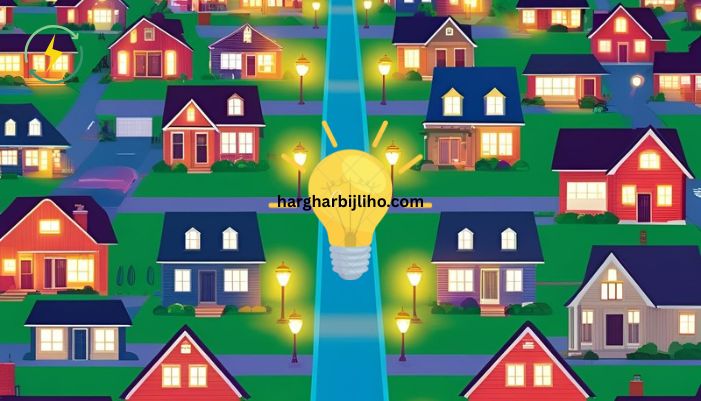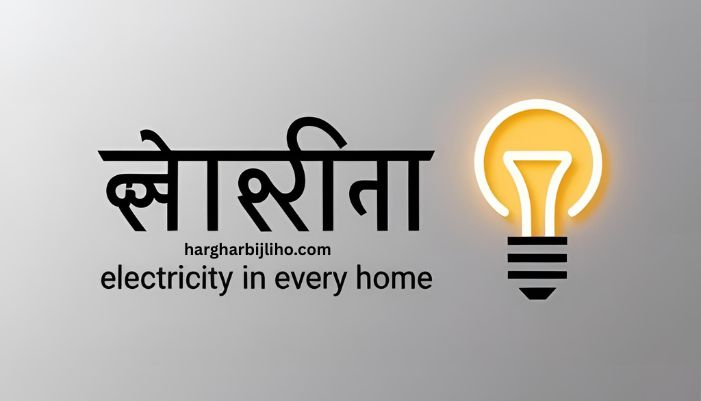Electricity powers our daily lives. It lights our homes, helps children study, keeps food fresh, and powers the devices we use every day. Yet, millions of families in India once lived without this basic need. To solve this, the Government of India launched the Har Ghar Bijli scheme under the Saubhagya Yojana. Its goal is simple but bold—connect every home in the country to electricity, no matter how remote or poor the area.
Contents
What is Har Ghar Bijli?
Har Ghar Bijli, which means “electricity in every home,” is part of the Pradhan Mantri Sahaj Bijli Har Ghar Yojana (Saubhagya) launched in 2017. This national scheme focuses on providing electricity connections to homes that have never had access to power. The aim is not just to install wires but to create a foundation for better health, education, and economic growth.
The plan gives special attention to Below Poverty Line (BPL) families, offering them free connections. Even homes in faraway villages or tribal areas are included, with custom solutions like off-grid solar systems used when the main grid isn’t available.

How It Works
State-level power companies, called DISCOMs, are responsible for carrying out the work. They identify homes without electricity, set up infrastructure, and install connections. In cities and towns, this often means a quick link to the existing power grid. But in remote areas—like forests, mountains, or border villages—solar kits and battery packs are used instead.
To make the process easier, the government also launched a mobile app and a website where people can check their status and request connections. For most poor families, the connection is free. Others may pay a small fee, often in easy monthly parts.
Travel Cartoons: A Fun Way to Explore the World
Progress So Far
Since its launch, the scheme has made major progress. By early 2021, over 99% of homes in India had been electrified. States like Uttar Pradesh, Bihar, Odisha, and Jharkhand saw some of the biggest improvements. However, a few remote areas still need more time due to tough terrain or lack of infrastructure.
The government tracks this progress using the Saubhagya dashboard, which provides real-time data on how many homes are connected. Planning tools like GIS mapping help DISCOMs create efficient routes for wires and transformers. Smart meters are also being used more widely to monitor usage and improve billing accuracy.
Why Har Ghar Bijli Matters
Getting power is not just about light. It’s about opportunity. Families can keep their homes lit at night, helping children study without straining their eyes. People can charge mobile phones, run fans during heatwaves, and use electric cookers instead of smoky stoves.
Health services improve too. With electricity, local clinics can store vaccines and run machines. Schools can use digital tools, and shops can stay open longer. Women, in particular, benefit from safer homes and more chances to work from home or start small businesses. Electricity also means less dependence on harmful fuels like kerosene, which is bad for both health and the environment.
Challenges Ahead
While most homes now have access to power, many still face regular power cuts. Old power lines, poor maintenance, and low voltage are common issues in rural areas. Some families, even after getting a connection, find it hard to pay monthly electricity bills. As a result, they may stop using the service or get disconnected.
Another major issue is reaching extremely remote areas. Some villages are located deep in forests, on hillsides, or on islands. For these places, physical access is a challenge, and setting up traditional power lines is slow and costly. These areas often need off-grid solutions like solar microgrids or home systems.
What’s New in 2025
Today, the focus has shifted from just connecting homes to ensuring reliable, 24×7 power. More than 28.6 million homes have already been electrified, and the goal now is to provide high-quality, stable power supply.
One major new effort is the PM Surya Ghar Muft Bijli Yojana, launched to bring free rooftop solar panels to 1 crore households. This helps families reduce their power bills and adds clean energy to the grid. It also supports India’s push toward a greener future.
Another ongoing reform is UDAY 2.0, which targets the improvement of DISCOMs. The plan focuses on fixing old wires, reducing power theft, and improving billing systems. This will help deliver steady electricity and cut losses for power companies.
Conclusion
Har Ghar Bijli has brought light to millions of homes across India. It has opened new doors for education, safety, and jobs. The mission is far from over, but the progress is real. With solar energy, smart meters, and better planning, India is moving toward a future where every home—not just has electricity—but has clean, reliable, and affordable power.
The success of this scheme shows what strong planning and political will can achieve. From dark villages to bright homes, Har Ghar Bijli is more than a project—it’s a step toward true equality and opportunity for all.


